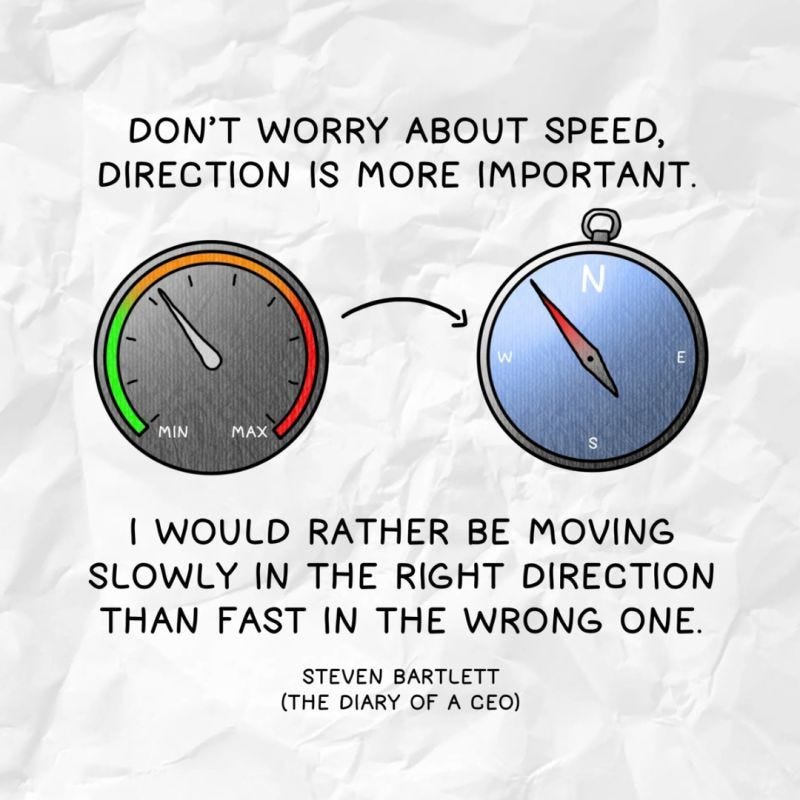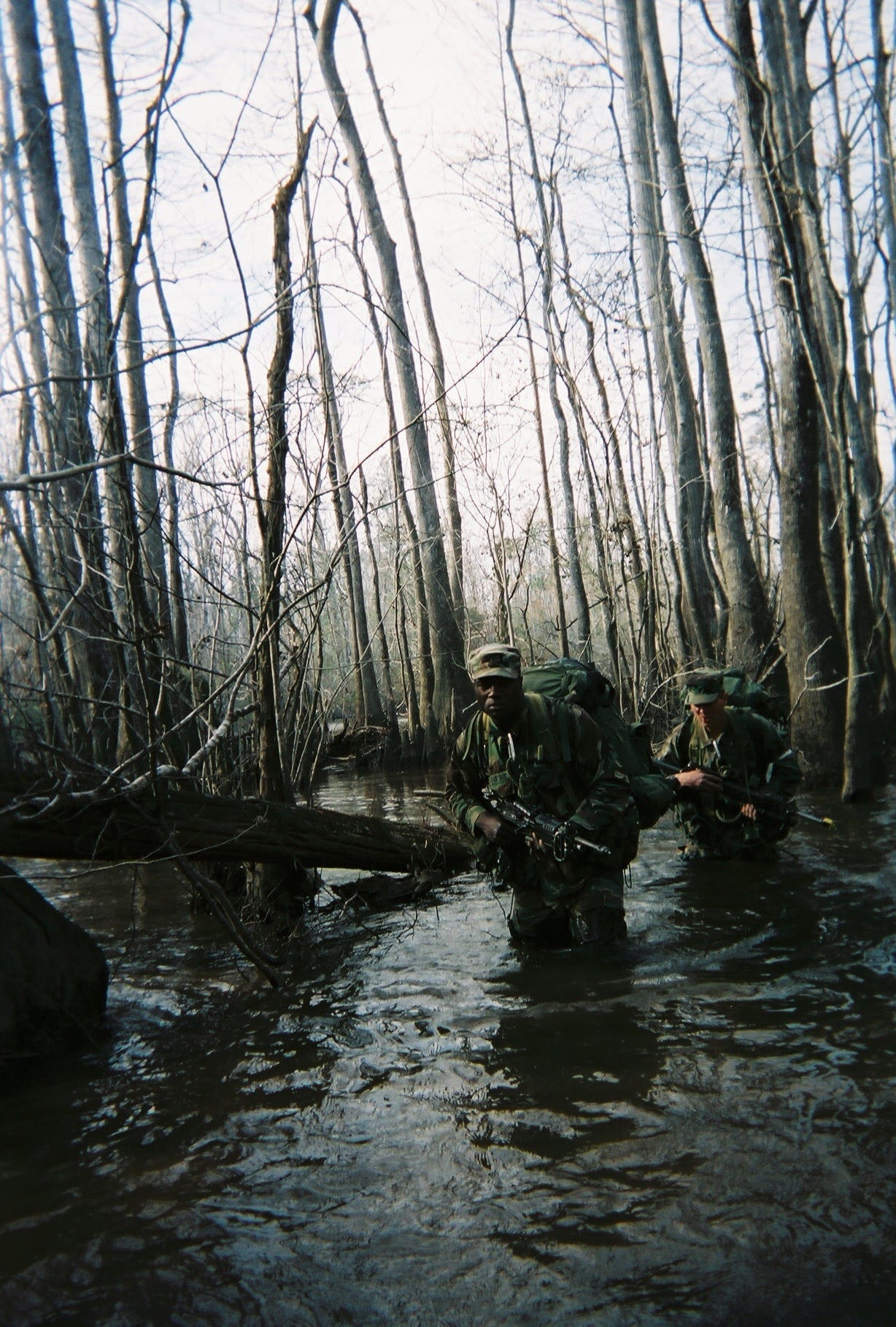Slow is Smooth and Smooth is Fast
Taoism and Army Rangers
Welcome to Polymathic Being, a place to explore counterintuitive insights across multiple domains. These essays take common topics and investigate them from different perspectives and disciplines to come up with unique insights and solutions.
Today's topic introduces an old Military Special Operations adage that I’ve found to be incredibly useful throughout my entire career. It’s a phrase I remind myself and others of quite regularly so that we can ensure the proper execution of a strategy or a task. It’s the ability to take it slow, make it smooth, and finish fast.
“Come on Ranger! MOVE IT! What the &*##^ are you doing RANGER! Disassemble that weapon and get it back together NOW!”
My hands fumbled and I rushed to reinsert the locking pin on the M249 Light Machine Gun and dropped it on the ground. I frantically pawed through the woodchips and dirt and wasn’t able to find it until after my time had run out for that skills test. I failed. I had one more try.
“Slow is smooth and smooth is fast.” A Ranger School classmate of mine whispered from behind me.
It was near the end of hell week, also known as the Ranger Assessment Program or RAP Week. I honestly don’t remember much except for puggle stick fighting, running, and crawling through mud with sand and dirt in every nook and cranny. I can’t say I forgot if I slept because we really didn’t get that luxury.
We were doing a final Soldier skills testing and this one was the disassembly, reassembly, and functions test of a Squad Automatic Weapon known as the M249 SAW. It was not a hard process, but it was a tight timeline, in the dark, with a light rain falling, I hadn’t slept in days, and the Ranger Instructor (RI) was screaming in my face.
Slow is smooth and smooth is fast.
It clicked. I took a breath, shook out my arms, and centered myself. “Ready Ranger?” the RI barked.
I nodded. “aaaaaand GO!”
I just took my time and moved steadily, this time blocking out the RI. He actually quieted down when he saw I wasn’t reacting to it anymore. I then smoothly reassembled the weapon and finished the functions test with half of my time allotment left.
I went slow, made it smooth, and ended fast.
Wu Wei
I wasn’t until many years later that I learned this concept is actually rooted in an ancient Taoist concept called Wu Wei. It’s a complex topic that the book Trying Not to Try explores in great detail but summarized, it’s what people call a flow state.

Less appreciated is that it also includes the concept of non-action. This needs to be clarified from inaction which implies indecision. Intentional nonaction is one of the most powerful tools in a leader’s pocket and it avoids the reactions we explored before in Nothing Good Happens After 4PM.
Nonaction is so powerful that it can save lives.
Fast forward my Ranger School experience into the swamp phase at Eglin Airforce Base in Florida and you’d find me up to my waist in freezing cold water in January. Suddenly, the sound of small arms fire reverberated through the woods as everyone hunkered down and took cover.
This was my mission and I signaled everyone to stay down as we tried to determine if we were even the targets. It quickly became evident that it was either one of our sister platoons being ambushed or our opposing force was performing a recon by fire.
A recon by fire is a tactic used when a unit knows the ‘enemy’ is in an area, but they don’t know exactly where. So, they fire their weapons in a likely spot. If the spot shoots back, you have now found the enemy, the first step in Find - Fix - Finish, the beginning trifecta of eliminating a force.
Intentional non-action to this recon by fire meant the opposing force did not know where we were, and we were able to continue maneuvering out of the waist-deep swamp water and onto terrain that was much better to fight on.
A similar example occurred in Iraq when the convoy I was leading began to take small arms fire. Yet it wasn’t well-aimed fire, and my gunners couldn’t find any targets to engage. The bullets snapping around sounded more like ricochets and nothing was coming too close.
An officer in my vehicle began demanding that we return fire. Instead, I backed out of the area since we weren’t responsible for that area of operations and had a different mission we had to complete.
On returning to the main base, we found that, had we continued forward and returned fire, we would have run into an Iraqi police unit that had reacted to their own ambush. If we had taken action, we would have driven straight into a kill zone, likely our own.
Applied to Civilian Life
In total irony, I now write this section minutes after having a conversation with my eldest daughter about a fight she had with her sister. The right answer wasn’t to have the fight to begin with. The right answer was non-action. Because as she demanded her way, she fought a battle she couldn’t win.
So, I just shared this story from Ranger School with her as an example. I couldn’t have timed it better and it was a concept she could now apply to her own engagements.
Outside of teaching children how to get along, I also apply it in every aspect of my professional work. Slow is smooth and smooth is fast also lines up with a quote attributed to Einstein.
“If I had an hour to save the world, I would spend 55 minutes defining the problem, and 5 minutes coming up with solutions.”
I shared that quote with a leader I had in the past, and he responded, “We don’t have 55 minutes.” I told him I only needed 15 minutes to let the situation stabilize and define the true problem and yet it was still denied. Three months later we were no further along, still without a problem definition, and yet having worked feverishly on an incredible number of ill-conceived tasks. What we like to refer to as “multiple course corrections and no voyage planning.” This is I tell people to Design Like a Sailor.
This ties back into another program management axiom. “There’s next enough time to do it right the first time but there’s always time to back and do it over, and over, and over again.” This is clearly the realm of the industrious leader who rarely improves the process as we’ve explored previously.
Slow is smooth and smooth is fast is just one more tool in your portfolio to address and minimize the chaos and create stability in your organization. It’s how to transition from a reactive to a considered response which, in time, matures into proactivity. It’s embedded in Systems Thinking and helps you provide Direction so that you can align your organization first, allowing you to execute smoothly and finish faster.
For more counterintuitive insights from my time in the Army, check out:
Enjoyed this post? Hit the button ❤️ above or below because it helps more people discover Substacks like this one and that’s a great thing. Also please share here or in your network to help us grow.
Further Reading from Authors I really appreciate
I highly recommend the following Substacks for their great content and complementary explorations of topics that Polymathic Being shares.
Looking for other great newsletters and blogs? Try The Sample
Every morning, The Sample sends you an article from a blog or newsletter that matches up with your interests. When you get one you like, you can subscribe to the writer with one click. Sign up here.







good insights man. reminds me of one of Naval’s sayings, it matters more in which direction you’re going, than how fast you are going.
A really engaging piece. It strikes me that the one factor all my ex forces colleagues or friends have is described as resilience, but I dont think its quite that, as many of them are headstrong and quit as easily as they get started. It's the more specific ability to begin in the presence of doubt. I struggle with that daily and despite many good lessons and maxims it seems the far more powerful motivation is their experience. Actually doing it hundreds of times is a more powerful education than anything you can be taught. Perhaps I need to hire a drill sergeant? Anyone know a good one who likes beasting fat middle aged men to stfu and get on with it?